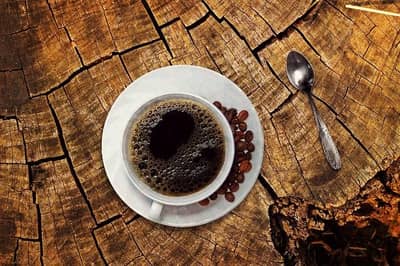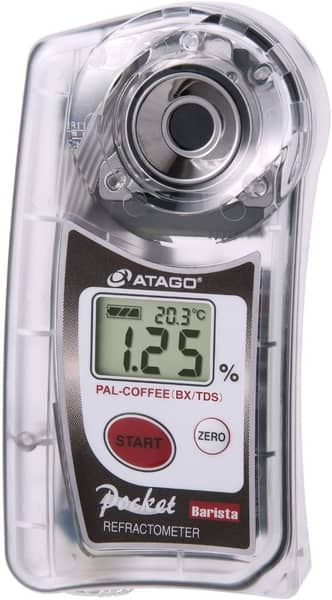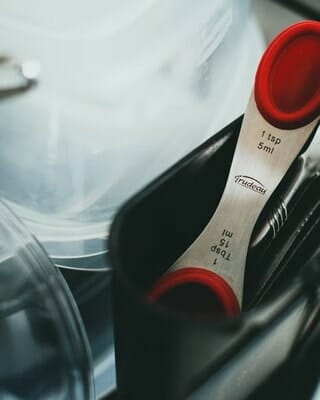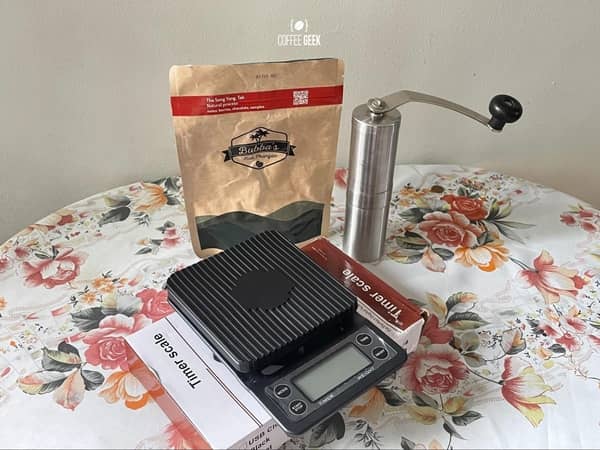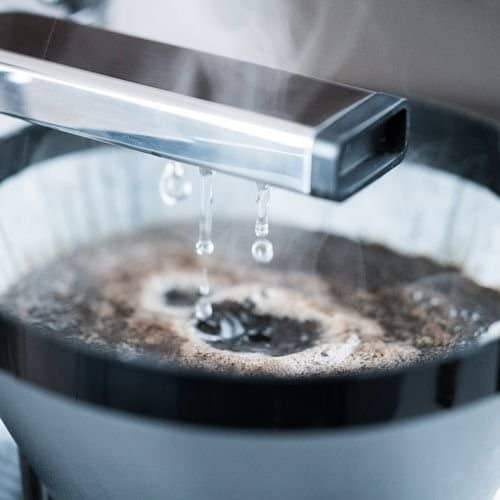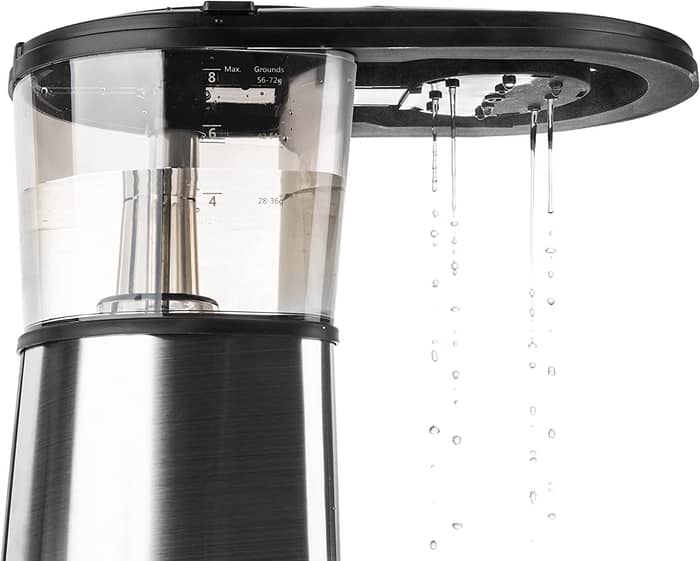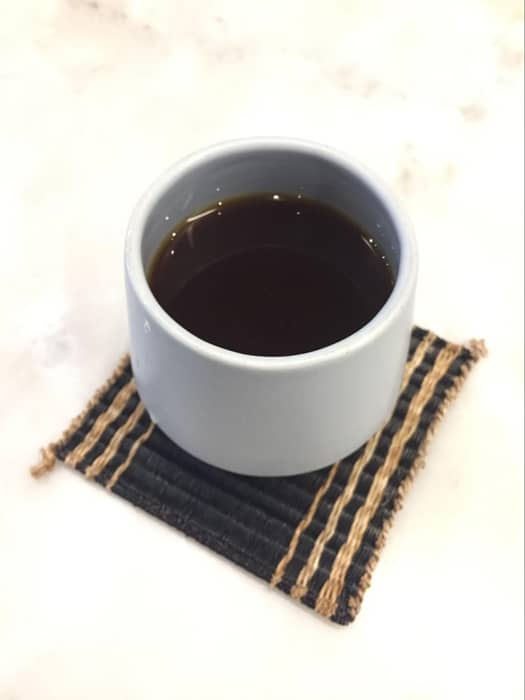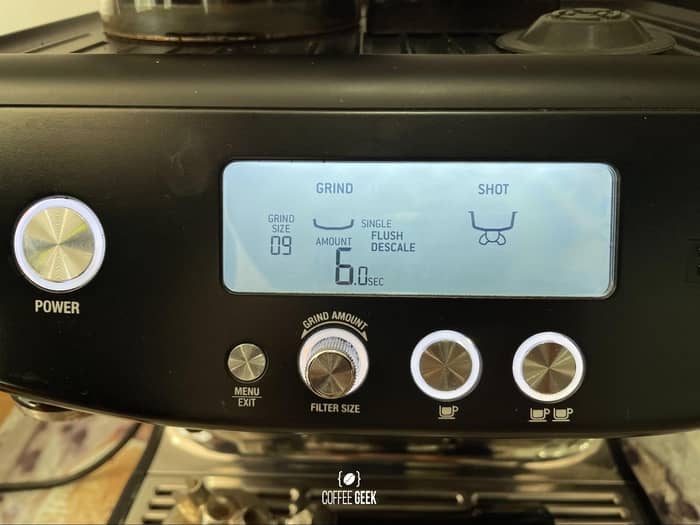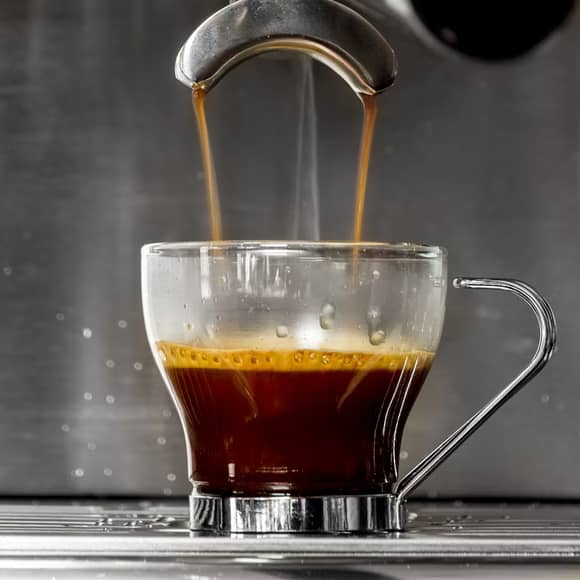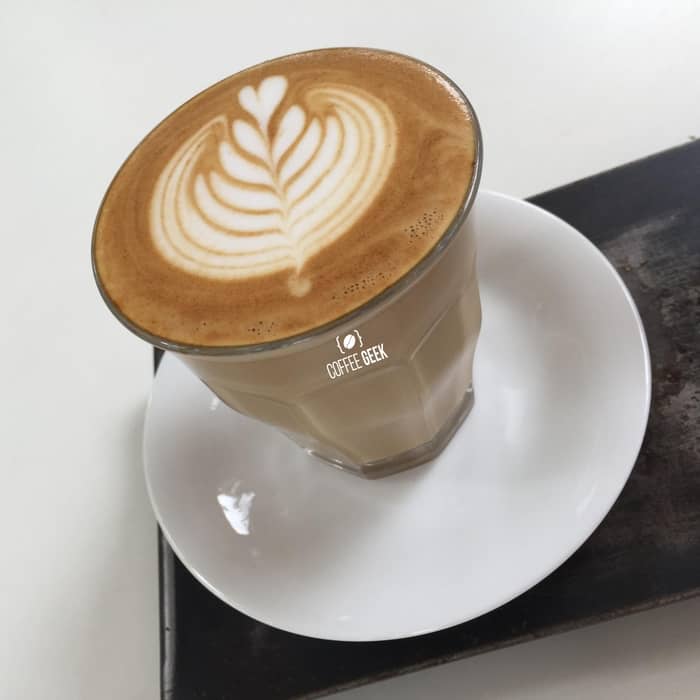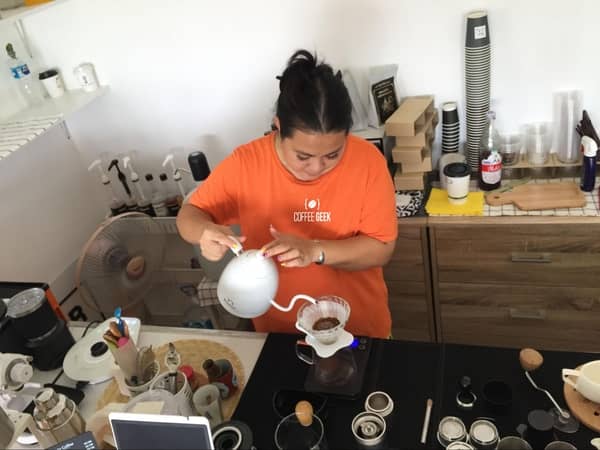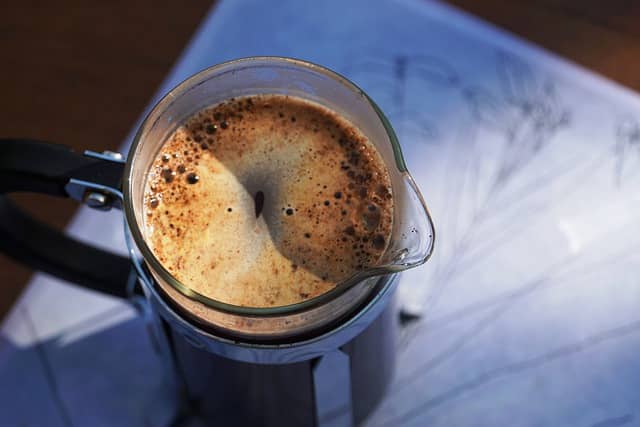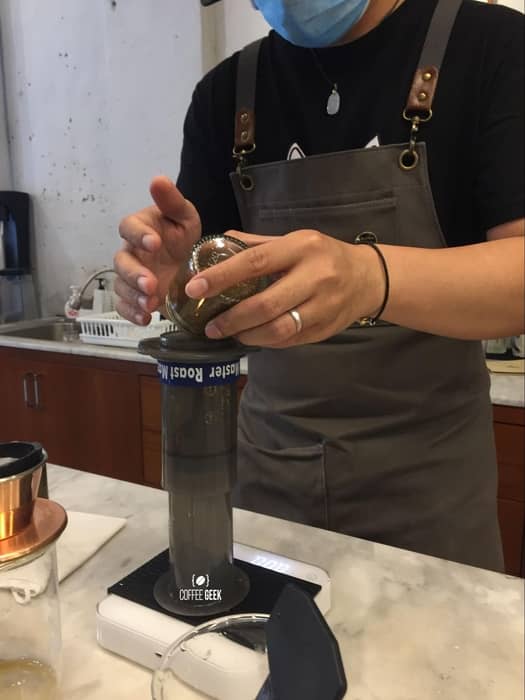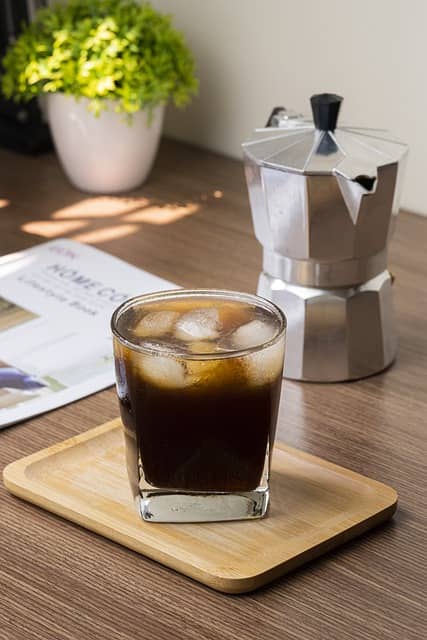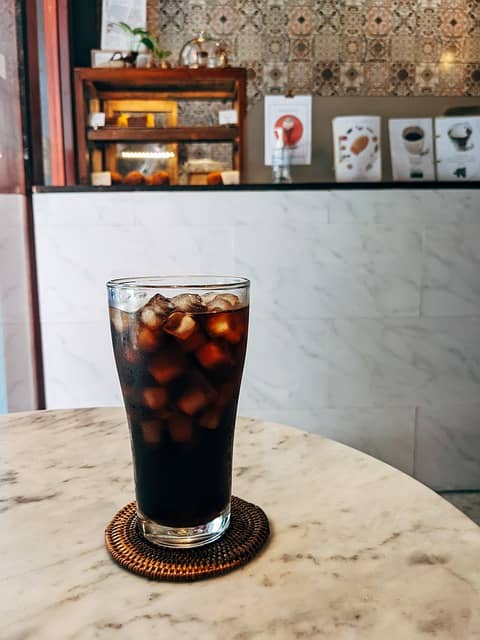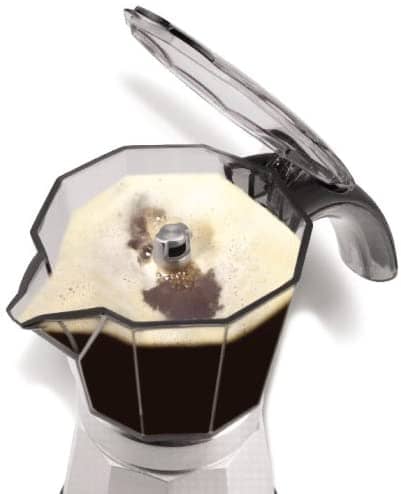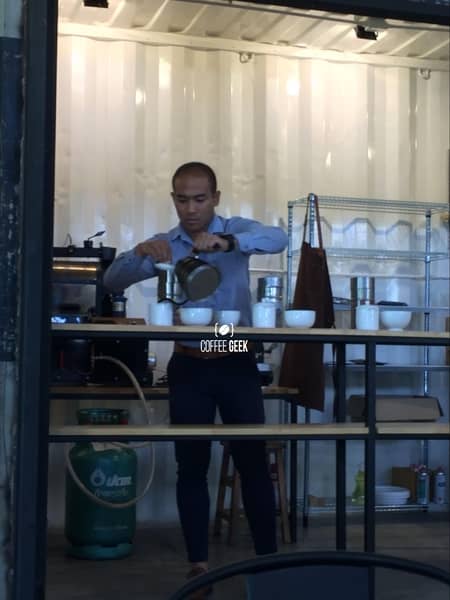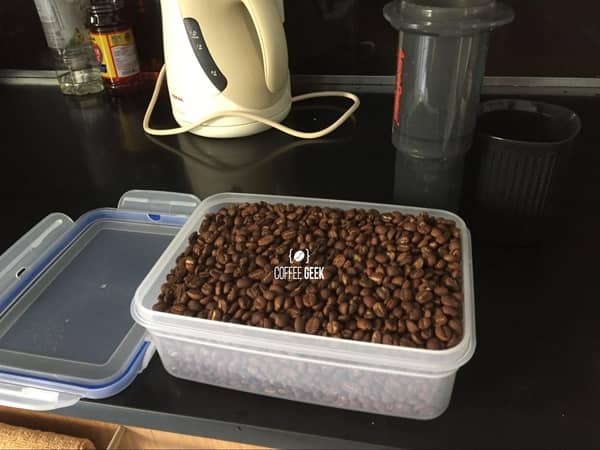The coffee to water ratio is one of the most important factors to take into account when brewing coffee at home.
And, if you’re like most coffee enthusiasts, you probably enjoy trying out different brewing methods at home.
But if you’re not quite sure how to adjust your coffee-to-water ratio for each method, you might be getting inconsistent results.
It can be tricky to get it just right, but with a little know-how, you can always have perfect coffee!
In this article, we’ll walk you through everything you need to know about the coffee-to-water ratio, so you can make amazing coffee every time. Ready to learn? Let’s go!
- What Do Coffee Ratios Mean?
- How Does Brew Ratio Affect Coffee?
- How Is Coffee Strength Measured?
- How To Measure Coffee And Water For Coffee Brewing
- What Is A Good Ratio For Drip Coffee?
- What Is A Good Espresso Ratio?
- What Is The Ratio Of Coffee To Water In A Pour Over?
- What Is The Best Coffee To Water Ratio For French Press?
- Ratio Of Coffee To Water For AeroPress
- What Is The Ratio Of Coffee To Water For the Moka Pot?
- What Is The Best Cold Brew Ratio?
- Siphon Coffee Maker Ratio
- What Is The Coffee To Water Ratio For A Percolator?
- Other Factors
- To Wrap Up
- FAQs
What Do Coffee Ratios Mean?
When you’re making a cup of coffee, you must work with the right ratio of coffee to water. This refers to how much ground you use relative to how much water you are steeping it in.
There is a bit of a science to determining the ideal brew ratio for different tastes and coffees.
Some people prefer their coffee bold and strong, meaning that they may want to use more coffee grounds per cup of water.
On the other hand, if you want a light, rosy cup of joe, then you might choose a lower ratio with less coffee and more water.
Ultimately, it all comes down to your preferences and how you like your coffee to taste.
However you decide to determine your preferred ratio, just remember that every little detail makes a big difference when it comes to creating the perfect cup!
But, why is brew ratio important anyway?
How Does Brew Ratio Affect Coffee?
Different brew ratios can affect everything from the flavor and mouthfeel of your coffee to its strength and brightness.
The right balance can help with achieving the optimal contact between the ground coffee and hot water flow, allowing delicious coffee compounds to get extracted into the final cup.
A well-extracted cup of coffee boasts a balance in:
- Aroma
- Bitterness
- Sweetness
- Brightness/Acidity
- Body/Mouthfeel
- Cleanliness/Aftertaste
If you’re interested in these “technical” terms, learn more about how to brew and drink coffee like a coffee aficionado.
So, the coffee-to-water ratio can be directly linked to the brew strength, which I’ll go into more detail about in the next section.
Generally speaking, the higher this ratio is, the sweeter and lighter your coffee will be.
Conversely, a lower brew ratio will result in coffee that’s a bit stronger with more bitter flavors due to increased extraction from the grounds.
But, in bad cases:
- If you use too little water or too much coffee, the brew will be overly bitter, over-extracted, and too concentrated.
- If you use too much water or too little coffee, the brew will be weak, diluted, and under-extracted with a harshly sour taste.
How Is Coffee Strength Measured?
As I mentioned above, the coffee-to-water ratio affects the brew strength AKA how strong the cup is.
The brew strength can be measured in Total Dissolved Solids (TDS), as promoted by the Specialty Coffee Association [SCA].
TDS refers to the number of coffee compounds/solids that got extracted and are concentrated/dissolved in the final cup.
The higher the TDS is, the stronger the coffee is.
Many coffee drinkers also associate coffee strength with caffeine content. In other words, the harder the caffeine hit is, the stronger the cup is considered to be.
That’s another way to look at it. And, since coffee is the source of caffeine, the higher the TDS is, the more compounds are present, contributing to higher caffeine content.
So, it’s not wrong to expect an energy boost from a “strong” cup of Joe.
How To Measure Coffee And Water For Coffee Brewing
There are many ways to approach this so it can be confusing and hard to follow when reading about measuring coffee.
So DON’T SKIP this section as we’ll clarify the best measurements you should take!
Coffee Grounds
Americans tend to rely on tablespoons, a common and easy-to-follow measuring system in the kitchen.
However, when it comes to coffee, the tablespoon system just doesn’t work very well due to how inconsistent the result is.
Inconsistencies are prominent because:
- People’s derivation of “a tablespoon” can vary. It can be a heaping or level tablespoon. And that much change can still affect the coffee-water ratio.
- Each brew method calls for a different grind size, which affects how much coffee can fit in a tablespoon.
So, it’s a much better idea to measure ground beans in grams instead of tablespoons to get an accurate measurement.
I recommend getting a reliable coffee scale to accompany all brew methods and help you inch closer to great coffee.
You can grab one for just 30 bucks.
The rest of the article will address how much coffee you should use in grams to maintain consistency and accuracy.
But, if you see tablespoons being used elsewhere, generally, 1 tablespoon = 5 grams of coffee, FYI.
Water
We recommend the same for water volume measurements. You should use the scale to gauge the amount of water you use in grams (or millimeters) to match the coffee measurement.
But, we’ll still give you the volume in ounces as well. It’ll give you a better picture of how much water is used since many of us are more used to it than the metric system.
And, as you might imagine, there are tons of different ratios out there; each one is optimal for a different brewing method.
So, next, we’ll spill the beans on the coffee-to-water ratios for the 9 most popular brewing methods to help you start your coffee brewing journey.
What Is A Good Ratio For Drip Coffee?
TL;DR: Most coffee experts recommend a 1:17 or 1:18 for drip machines.
General Recommendation
When making a cup of regular coffee, the common coffee-to-water ratio is 1:17, which means you should use 1 gram of ground coffee for every 17 grams of water.
For a standard 8-oz (237-ml) cup of drip coffee, prepare 14 grams of ground coffee and 237 ml or 8 oz of water.
When preparing a whole pot of coffee, however, you should keep in mind that a “coffee cup” in this context is only 5 – 6 oz (148 – 177 ml).
So, a 12-cup coffee pot can supply 60 – 72 oz (1.8 – 2.1 l), requiring 104 – 125 g of coffee grounds to meet the recommended coffee-to-water ratio.
Golden Cup Standard (SCA)
The Specialty Coffee Association [SCA] has a slightly different coffee ratio that’s been tested and calculated by experts in the coffee world to optimally deliver a quality cup that meats the Golden Cup Standard.
A cup of Joe can only be considered a Golden Cup when it exhibits a desirable brew strength, measured in TDS, of 11.5 – 13.5 grams per liter.
To achieve the Golden Cup Standard, the coffee brewing process must follow the recommended coffee-to-water ratio of 55 g/liter (plus-minus 10%), or around 1:18.
This means it’s a tiny bit more diluted than the common coffee ratio passed around the coffee community.
Golden Ratio (NCAUSA)
If you want more references, here’s the general coffee-to-water ratio as recommended by the National Coffee Association USA [NCAUSA].
Their Golden Ratio is 1 – 2 tablespoons (around 5 – 10 g) of ground coffee for every 6 oz (177 ml) of water, which can be roughly translated to 1:35 – 1:18.
Now, I’d stick to the latter – 1:18 – because 1:35 AKA just using 5 grams of coffee for 6 oz of water will make a very very diluted cup of coffee.
Well, unless that’s what you want, then sure, go right ahead!
What Is A Good Espresso Ratio?
TL;DR: The recommended coffee ratio for a traditional espresso is 1:2 – 1:3. But there’s more to espresso than that.
You’re missing out a lot if you’re just drinking brewed coffee made by drip filter coffee makers.
Popular coffee shop menu items like latte, cappuccino, and Americano are all espresso-based drinks made with an espresso machine.
So, it won’t be a Coffee Geek article without the mention of espresso drinks!
This coffee brewing method actually has 3 distinct variations that you might not be aware of. Let’s go through the coffee ratio of each of them.
Normale
A Normale espresso is Italian for “normal espresso”. It’s the most popular type of espresso drink and what you’d get when ordering a cup of espresso brew at the coffee shop.
The Golden coffee-to-water ratio for Normale espresso is 1:2 – 1:3. You can start with 1:2.5 and adjust as needed.
- Single shot: 7 grams of coffee and 14 – 21 ml of water
- Double shot: 14 grams of coffee and 28 – 42 ml of water
Keep in mind that it’s easier to pull a double shot than a single shot.
And, if you want to have full control over the coffee-to-water ratio, make sure to get an espresso machine that allows you to adjust the ground dosage and program the water volume.
Ristretto
A Ristretto espresso is basically a “restricted” shot of espresso. It has a smaller coffee-to-water ratio and a shorter brewing time (only 15 seconds instead of 30).
The common ratio for Ristretto is 1:1 – 1:1.5.
- Single shot: 7 g of coffee and 7 – 10.5 ml of water
- Double shot: 14 g of coffee and 14 – 21 ml of water
A double shot of Ristretto is used as the base of many espresso coffee drinks, including Flat White and Cortado, to give them a sweeter and stronger coffee taste.
Lungo
A Lungo, which is the Italian word meaning “long”, is another type of espresso. It can also be called a “Long Shot”.
It’s pretty much the opposite of the Ristretto. Instead of being “restricted”, the Lungo has:
- A bigger coffee-to-water ratio of 1:3 – 1:4
- A longer extraction time of 35 – 40 seconds (sometimes even a full 1 minute!)
That means, you need to prepare:
- Single shot: 7 g of coffee and 21 – 28 ml of water
- Double shot: 14 g of coffee and 42- 56 ml of water
You can also switch from the typical Normale espresso to the Long Shot as the espresso base.
Although it’s more diluted (because there’s more water), the longer extraction time also allows more coffee compounds to slip in, including more bitter and brighter ones.
What Is The Ratio Of Coffee To Water In A Pour Over?
Since Pour-Overs are manual drip coffee makers, generally, the same coffee-to-water ratio of 1:17 can be applied to Pour-Over coffee as well.
Two of the most common Pour-Over brewing devices are the Hario V60 and Chemex.
What Is The Best Ratio For V60?
Hario, the brand that designed and manufactures V60, recommends preparing 15 g of coffee and 250 ml of water when brewing for one person.
That’s about 1:16 – 1:17 in ratio for this Pour Over coffee.
What Is The Ratio Of Coffee To Water For Chemex?
To brew coffee with a Chemex, the brand recommends using 1 rounded tablespoon of coffee (~ 5 g as we agreed on earlier) for every 5-oz (148 ml) cup.
That makes the coffee-to-water ratio as high as 1:30, which is very very diluted!
I believe (as many other coffee aficionados) that you should stick to the 1:16 – 1:17 ratio for the Chemex as well.
Feel free to add more or less ground coffee to make the brew stronger or weaker, ultimately meeting your personal taste.
What Is The Best Coffee To Water Ratio For French Press?
The recommended coffee-to-water ratio for French Press is 1:15.
So, for a standard 8-oz cup of French Press coffee, you need 16 g of ground coffee beans and 8 oz (237 ml) of water.
Ratio Of Coffee To Water For AeroPress
You should prepare around 17 g of ground coffee beans and 220 g of hot water to make a great cup with the AeroPress.
For an AeroPress, the recommended coffee-to-water ratio is around 1:13 – 1:15.
Other methods may require a slightly different amount of grind and water, such as the Inverted Method.
If you’re using an AeroPress Go, follow my instructional video and prepare 13.5 g of coffee and 195 g (or ml) of water.
You can go for a smaller ratio to get a bolder and more intense espresso-style AeroPress concentrate. Complement it with a couple of swirls of hot water or milk to dilute it and enjoy.
If our suggestion is too strong for you, feel free to add fewer ground coffee beans (because the typical AeroPress can usually accommodate just a single serving of 8 oz/237 ml). Go for the typical Golden Ratio of 1:16 – 1:17.
What Is The Ratio Of Coffee To Water For the Moka Pot?
The ratio of coffee-to-water for brewing with a Moka Pot is 1:7, making it a lot stronger and more concentrated than a regular coffee brew.
That’s why Moka Pot coffee is often referred to as an alternative to espresso.
Usually, to brew coffee with a Moka Pot, all you have to do is:
- Fill the second chamber – the metal filter basket – with grounds so that they’re leveled without pushing them down
- Add water to the bottom chamber until it reaches right below the safety valve
So you don’t have to meddle much with measuring unless following those general instructions doesn’t give you what you want.
What Is The Best Cold Brew Ratio?
The common coffee-to-water ratio for Cold Brew coffee is around 1:4 – 1:5.
If you use a 12-cup French Press to make Cold Brew, which has a 51 oz/1.5 l capacity, as we do to make Cold Brew coffee, you should prepare 300 – 375 g of ground beans.
Otherwise, use 6 – 7 g of coffee for every oz of water.
For a thicker and stronger Cold Brew coffee concentrate, you can opt for a coffee-to-water ratio as small as 1:2.
For a more diluted and easy to consume batch, 1:8 is recommended.
Siphon Coffee Maker Ratio
When brewing with a siphon coffee machine, you should follow the coffee-to-water ratio of 1:15.
Start with 27 g of coffee and 405 ml (14 oz) of water.
What Is The Coffee To Water Ratio For A Percolator?
The percolator has the coffee-to-water ratio of regular coffee, which is 1:17 – 1:18.
You should use around 13 g of coffee for every 8 oz (237 ml) of water.
Other Factors
Keep in mind that the coffee-to-water ratio should also be adjusted according to other variations, including:
- How strong or mild you like your brew
- How many cups of coffee you want to make (single or multiple cups)
So, although there are general recommendations for the water-to-coffee ratio, you need to experiment yourself to find the perfect ratio for your batch of coffee.
And, the coffee-to-water ratio is just one factor out of so many others that can affect the final cup.
Say, you get the water-to-coffee ratio right but mess up one (or some) of the others, it’s not odd if the coffee tastes bitter.
So, below are 7 others that you should also take into account to get the desired coffee strength:
- Freshness (Whole bean coffee and quality bean grinders are preferred over pre-ground coffee beans)
- Type of coffee beans (Different beans have different densities)
- Roast level
- Grind size
- Water temperature
- Brew time
- Type of coffee machine
For more information, check out how to make stronger coffee.
To Wrap Up
Overall, there is no one right ratio that works for everyone; it all comes down to experimenting with different combinations until you find the perfect balance between strength and taste.
So if you’re looking for an easy way to improve your morning cup of joe, try adjusting your brew ratio and see what happens! You might just end up with a better cup of coffee every time.
FAQs
How Many Scoops Of Coffee Do I Need For 1 Cup?
A level scoop of coffee is around 2 tablespoons of coffee, which is roughly 10 g. For an 8-oz (237-ml) cup of regular coffee (drip), you need 14 g of grounds, which is around 3 tablespoons AKA 1 and a half of a scoop.
How Much Coffee Do I Use For 8 Cups Of Water?
The recommended coffee-to-water ratio for regular drip Joe is 1:17. For 8 cups of water (64 oz/1,893 ml), you should prepare around 111 g of coffee.
How Much Coffee Do I Use For 4 Cups?
If it’s 4 cups of water, which is 32 oz/946 ml, you need 56 g of coffee. If it’s 4 coffee pot cups, which is 20 – 24 oz (591 – 710 ml), you need 35 – 42 g of coffee.



